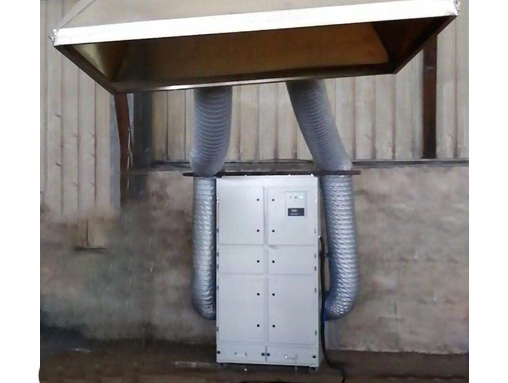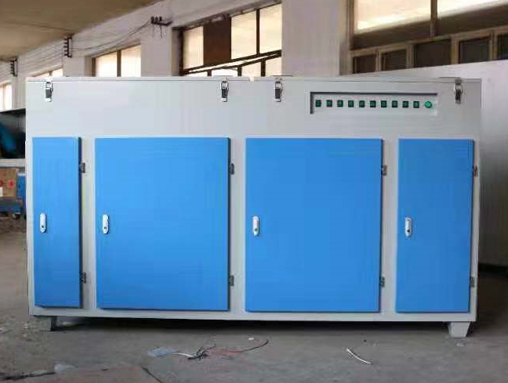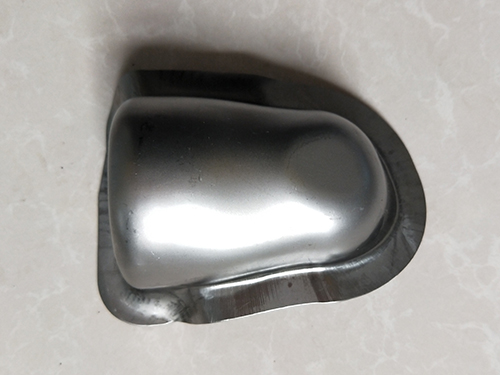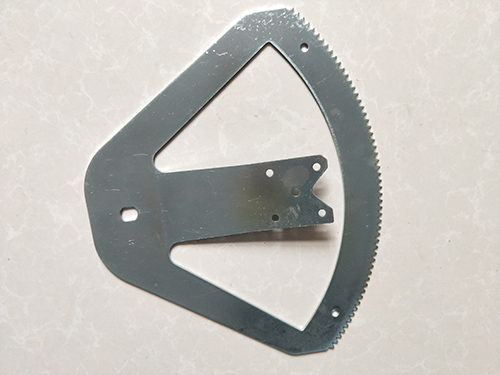A Brief Discussion on the Forming and Defect Analysis of Automotive Stamping Par
Cold stamping is an important part of the automobile manufacturing process. As an external surface part of the vehicle body, the outer covering part is not allowed to have defects such as wrinkles and dents on the surface. The skeleton part has a complex shape and is used to improve the rigidity of the vehicle body and connect or fix interior parts and other components. It can be said that car coverings are not only decorative parts in appearance, but also load-bearing parts in the form of closed thin shells. Due to the aesthetic and functional requirements of the vehicle body, many covering parts have local shape features inside the overall contour, which puts forward requirements for forming control technology. Analyzing the stress-strain state during the stretching process helps to identify process and quality issues that may arise during the stretching process.
The method of processing parts with shape, size, and performance requirements by applying pressure to the sheet metal through a mold on a press machine, causing it to separate or undergo plastic deformation, is called cold stamping. It is a commonly used processing method, characterized by:
1) Good stamping processability, through which complex shaped parts such as car doors, roof covers, engine hoods, etc. can be obtained.
2) Stable size and quality.
3) In the actual production process, by arranging materials reasonably, the utilization rate of materials can be improved and costs can be reduced.
4) Production, easy to operate, and products that can be obtained economically, stably, and efficiently under production scale conditions.
5) Utilize the plastic deformation of metal materials to improve the strength and stiffness of workpieces.
Metal stamping parts; It is a forming processing method that uses a press and mold to apply external force to plates, strips, pipes, and profiles, causing them to undergo plastic deformation or separation, thereby obtaining the desired shape and size of the workpiece (stamping part). The hardness testing of stamping materials is mainly aimed at determining whether the annealing degree of the purchased metal sheet is suitable for the subsequent stamping processing. Different types of stamping processing techniques require sheets of different hardness levels. Aluminum alloy plates used for stamping parts processing can be tested using a Vickers hardness tester. When the material thickness is greater than 13mm, a Babbitt hardness tester can be used instead. Pure aluminum plates or low hardness aluminum alloy plates should use a Babbitt hardness tester. Stamping and forging belong to plastic processing (also known as pressure processing), collectively referred to as forging. The stamping blanks are mainly hot-rolled and cold-rolled steel plates and strips. How to inspect stamped parts? Stamping part inspection is basically the same as other products, and there must be an inspection standard as a reference for part inspection. The following can be used as stamping part inspection standards:
1. Touch inspection
Wipe the surface of the outer cover clean with clean gauze. The inspector needs to wear touch gloves and touch the surface of the stamped part along the longitudinal direction, which depends on the inspector's experience. When necessary, the suspicious area that has been detected can be polished with an oilstone and verified, but this method is still a viable inspection method.
2. Oil stone polishing
(1) First, use clean gauze to wipe the surface of the outer cover clean, then polish it with an oilstone (20 × 20 × 100mm or larger), and use relatively small oilstones (such as 8 × 100mm semi-circular oilstones) to polish areas with arcs and difficult to reach areas
(2) The selection of oil stone particle size depends on the surface condition (such as roughness, galvanizing, etc.). Suggest using fine-grained oilstone. The direction of oilstone polishing is basically along the longitudinal direction, and it fits well with the surface of the stamped part. In some places, horizontal polishing can also be added.
3. Polishing of flexible mesh
Wipe the surface of the outer cover clean with clean gauze. Use a flexible sand mesh to tightly adhere to the surface of the stamped part and polish it longitudinally until the entire surface is covered. Any dents or indentations will be easily detected.
4. Oil coating inspection
Wipe the surface of the outer cover clean with clean gauze. Use a clean brush to evenly apply oil in the same direction to the entire outer surface of the stamped part. Inspect the stamped parts that have been coated with oil under strong light. It is recommended to place the stamped parts vertically on the vehicle body. This method can easily detect tiny bumps, dents, and ripples on stamped parts.
5. Visual inspection
Visual inspection is mainly used to discover visual abnormalities and macroscopic defects in stamped parts.
6. Inspection tool testing
Place the stamped parts into the inspection tool and inspect them according to the operating requirements of the inspection tool manual.
The hardness testing of metal stamping parts adopts Rockwell hardness tester. Small and complex shaped stamped parts can be used to test surfaces that are too small to be tested on ordinary desktop Rockwell hardness testers. Stamping processing includes processes such as punching, bending, deep drawing, forming, CNC machining and finishing. The materials used for stamping processing are mainly hot-rolled or cold-rolled (mainly cold-rolled) metal sheet and strip materials, such as carbon steel plate, alloy steel plate, spring steel plate, galvanized plate, tin plated plate, stainless steel plate, copper and copper alloy plate, aluminum and aluminum alloy plate, etc.
The portable surface Rockwell hardness tester is suitable for testing the hardness of these stamped parts. Alloy stamping parts are commonly used components in metal processing and mechanical manufacturing. Stamping processing is a processing method that uses molds to separate or shape metal plates and strips. Its application range is broad.
In the stamping industry, stamping is sometimes referred to as sheet metal forming, but with slight differences. The so-called sheet metal forming refers to the forming method of CNC machining plastic processing using sheet metal, thin-walled tubes, thin materials, etc. as raw materials, collectively known as sheet metal forming. At this time, the deformation in the direction of thick plates generally causes damage to hardware components and prevention measures.
According to the temperature during stamping, there are two methods: cold stamping and hot stamping. This depends on the strength, plasticity, thickness, degree of deformation, and equipment capacity of the material, while also considering the original heat treatment state and end use conditions of the material. Any rolled sheet has anisotropic physical properties. If the bending line is in the same direction as the rolling direction, cracks are prone to occur at the bending point; If the bending line is perpendicular to the rolling direction, cracks are less likely to appear at the bending point.







